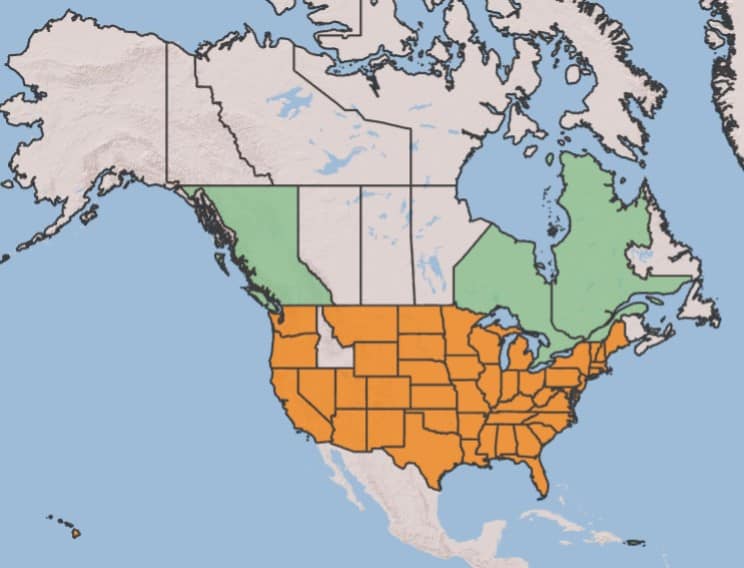Cenchrus
Explore More :
Explore plus :
Overview
Aperçu
Regulation :
Remarques Réglementation:
- Quarantine lists of countries e.g. China *may be updated without notice
Regulation Notes:
On quarantine lists of countries, e.g. China*.
*Quarantine lists of countries may be updated without notice.
Distribution :
Répartition :
The Cenchrus genus contains approximately 121 species distributed throughout tropical and subtropical regions worldwide (Cenchrus and Pennisetum were formally merged in 2010 based on phylogenetic analysis) (Chemisquy et al. 2010; Kellogg 2015).
Habitat and Crop Association :
Habitat et Cultures Associées :
Sandburs prefer open sites with sandy, well-drained soils, including cultivated fields, orchards, vineyards, beaches, dunes, railway lines, roadsides and other disturbed areas (Darbyshire 2003; CDFA 2017).
Economic Use, cultivation area, and Weed Association :
Utilisation économique, zone de culture et association de mauvaises herbes :
Duration of Life Cycle :
Durée du cycle vital:
Most species of sandbur are annuals, but some are perennials
Dispersal Unit Type :
Type d’unité de dispersion :
One to four spikelets in a spiny fascicle (looks like a cup-shaped bur, here after called bur) (Barkworth et al. 2007)
General Information
RENSEIGNEMENTS GÉNÉRAUX
Sandburs are grasses with bristly inflorescences, the name ‘sandbur’ derives from their sharp, spine-covered burs which readily pierce and stick to clothing, leather and skin (Darbyshire 2003, Chemisquy et al. 2010). The genus includes several species of economic importance including crops (e.g., pearl millet), ornamentals (e.g., fountain grass), and weeds (e.g., buffel grass, southern sandbur) (Chemisquy et al. 2010, Kellogg 2015).
.Identification
Identification
-
Size
- Cenchrus species burs are larger than most spikelets in the Poaceae
Shape
- Cenchrus species burs are globose to oval shaped
- Both the spikelet and floret of Cenchrus species are teardrop-shaped
Surface Texture
- Cenchrus species burs are covered in a variable number of stiff spines or flexible bristles (former Pennisetum species); the bur surface is sparsely to densely covered in hairs; the spikelet surface is smooth and papery and the floret is hard with a granular texture
Colour
- The colour of bur and spikelet of Cenchrus species is dull, straw yellow, some species may have purple spines
Other Features
- Cenchrus species burs have two types of spines: one or more series of partially fused, flattened spines and separate thin spines around the base and sides of the bur
- There is a persistent short stalk at one end of the bur
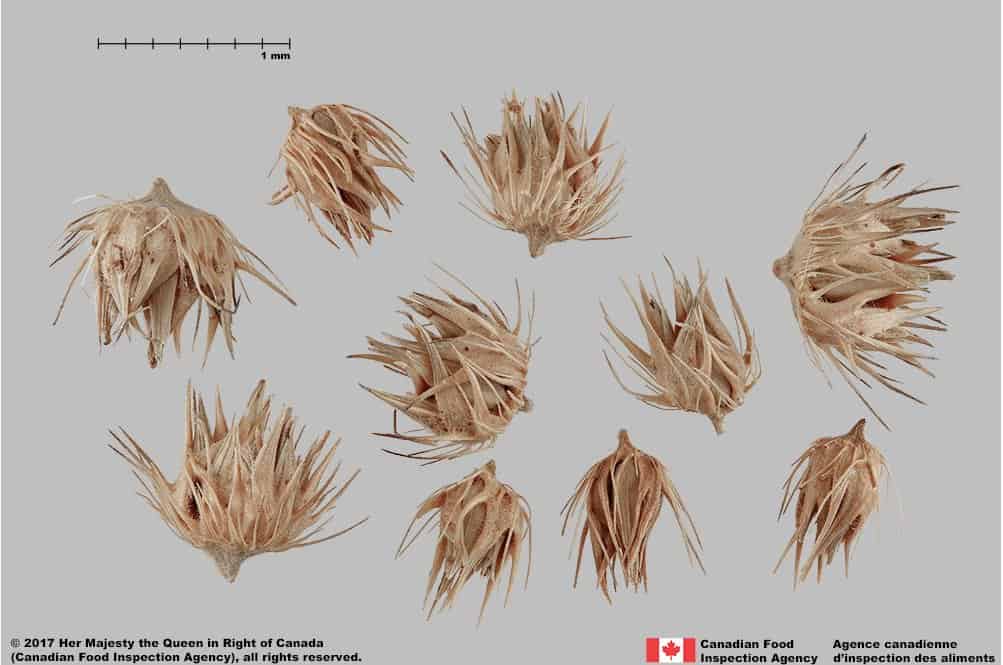
Southern sandbur (Cenchrus echinatus) burs

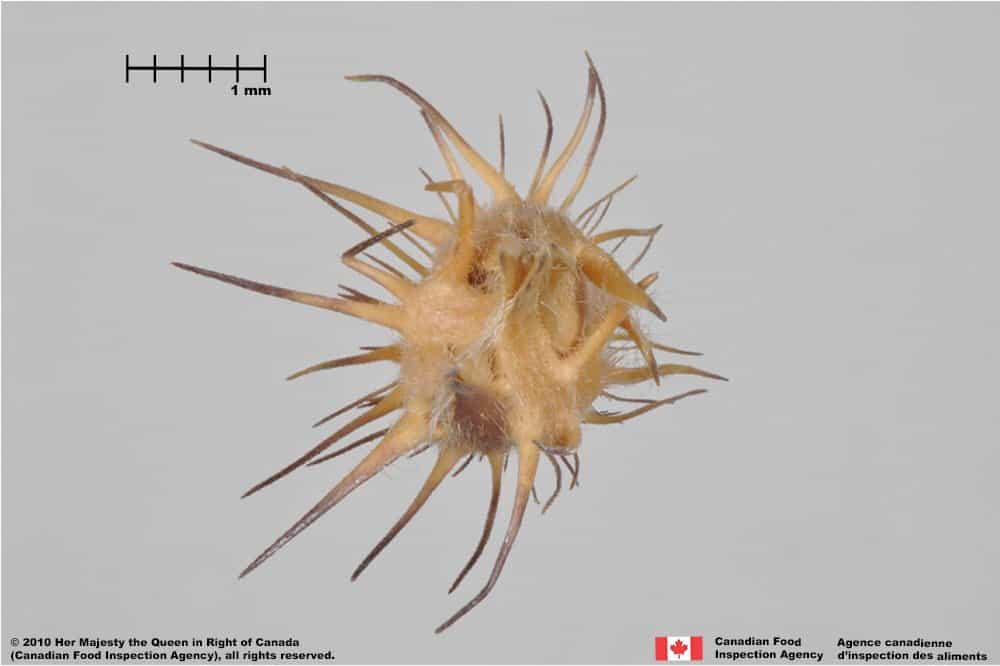
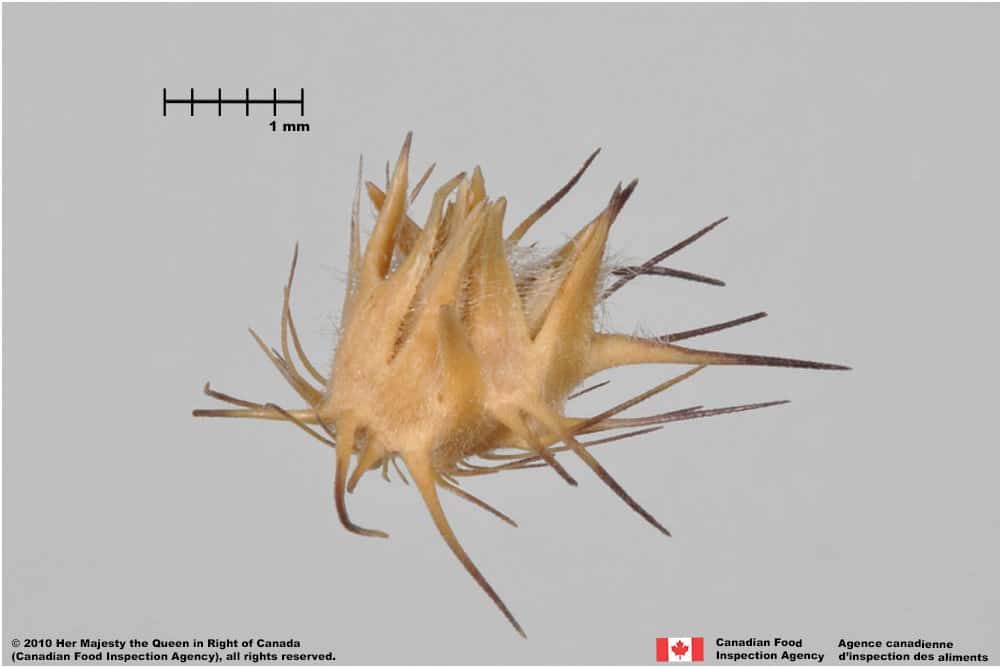
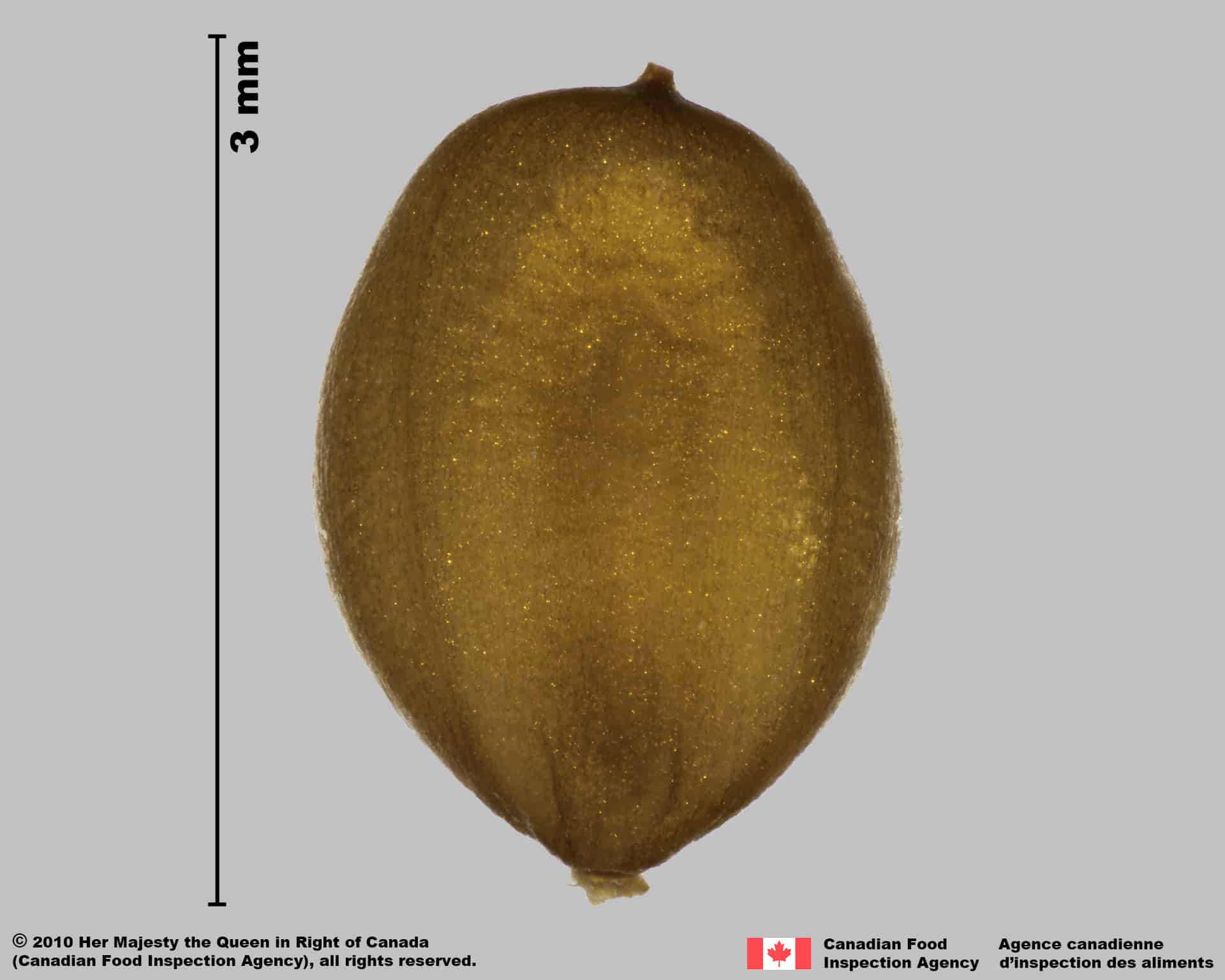
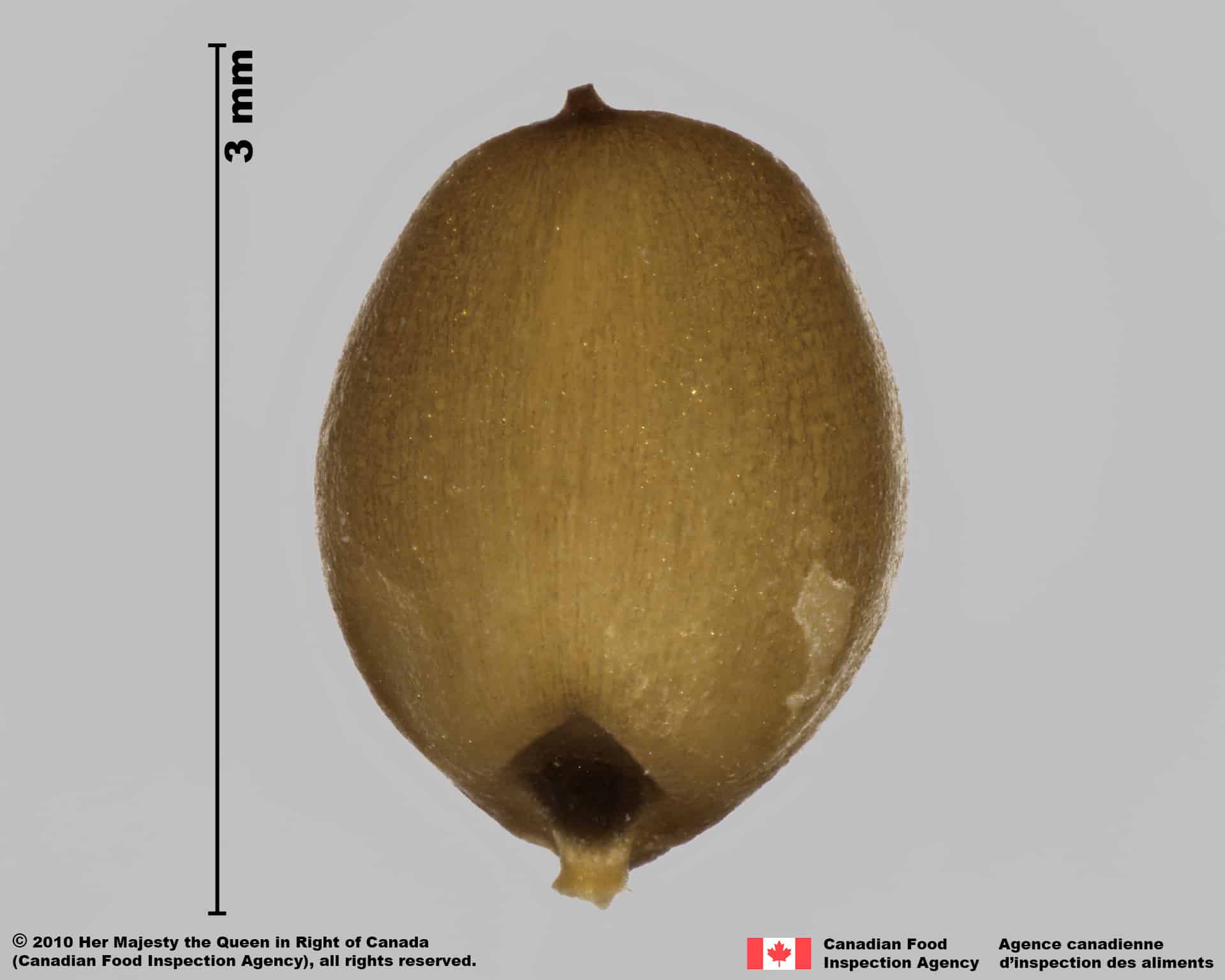
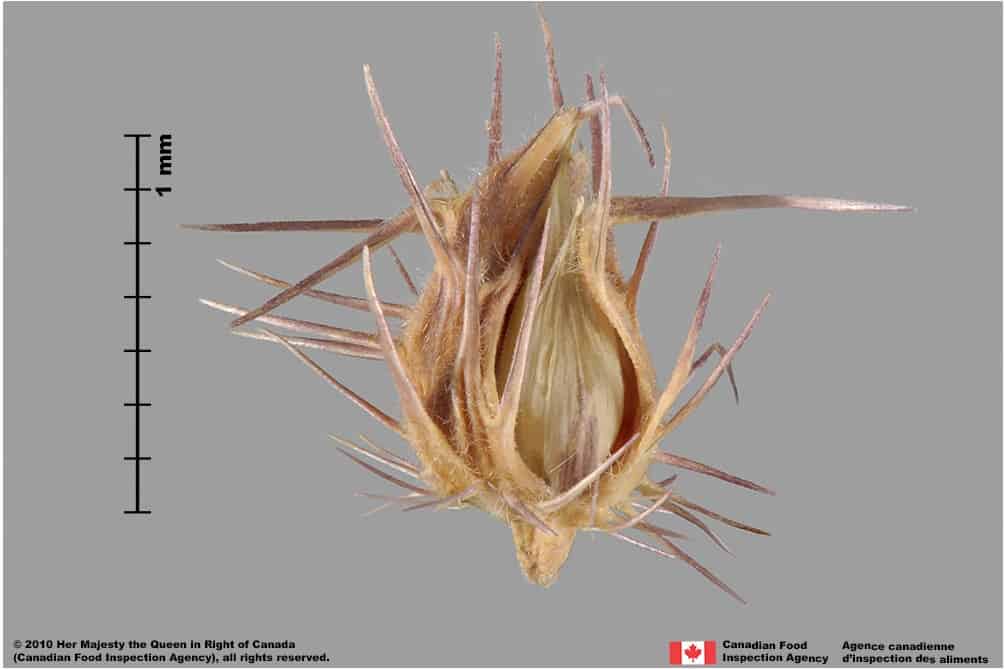
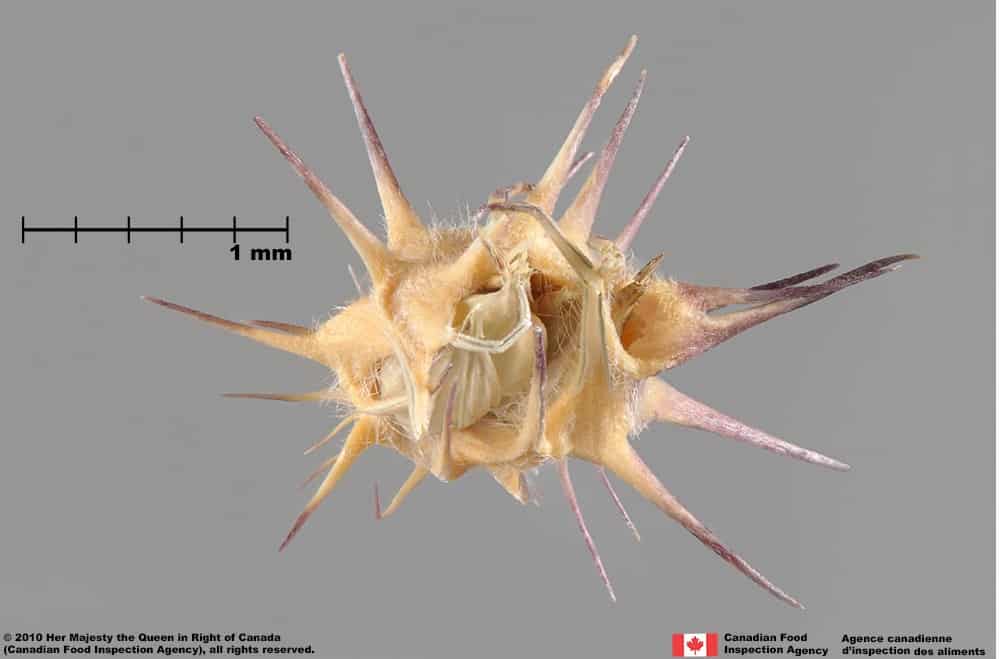
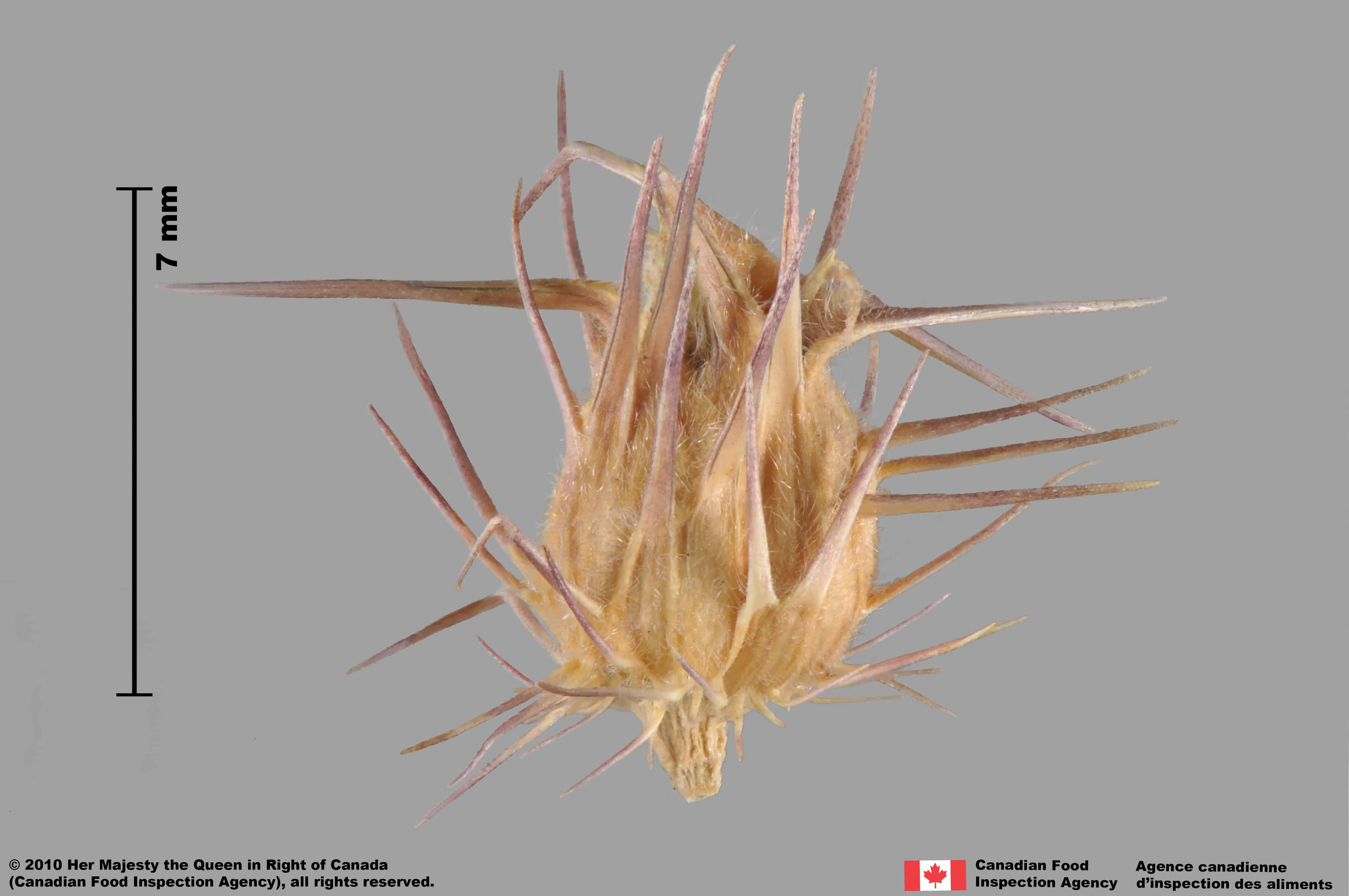
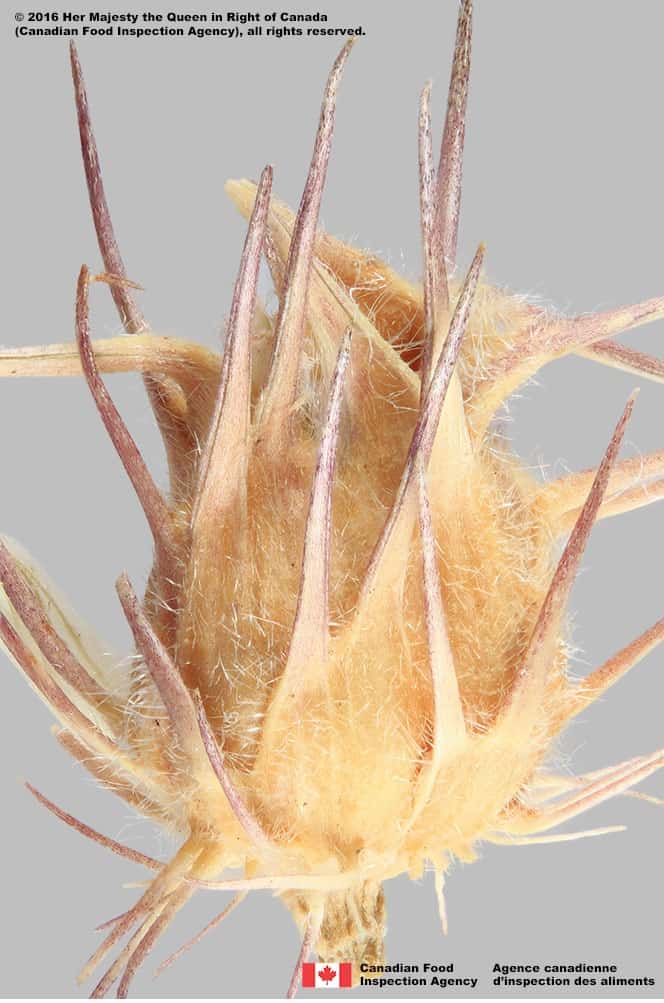
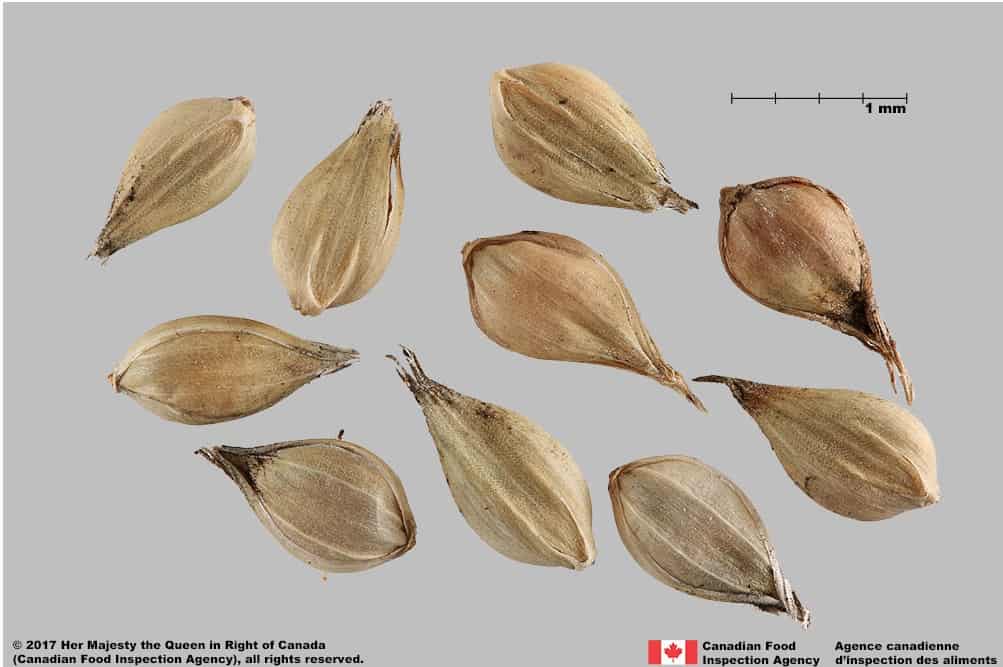
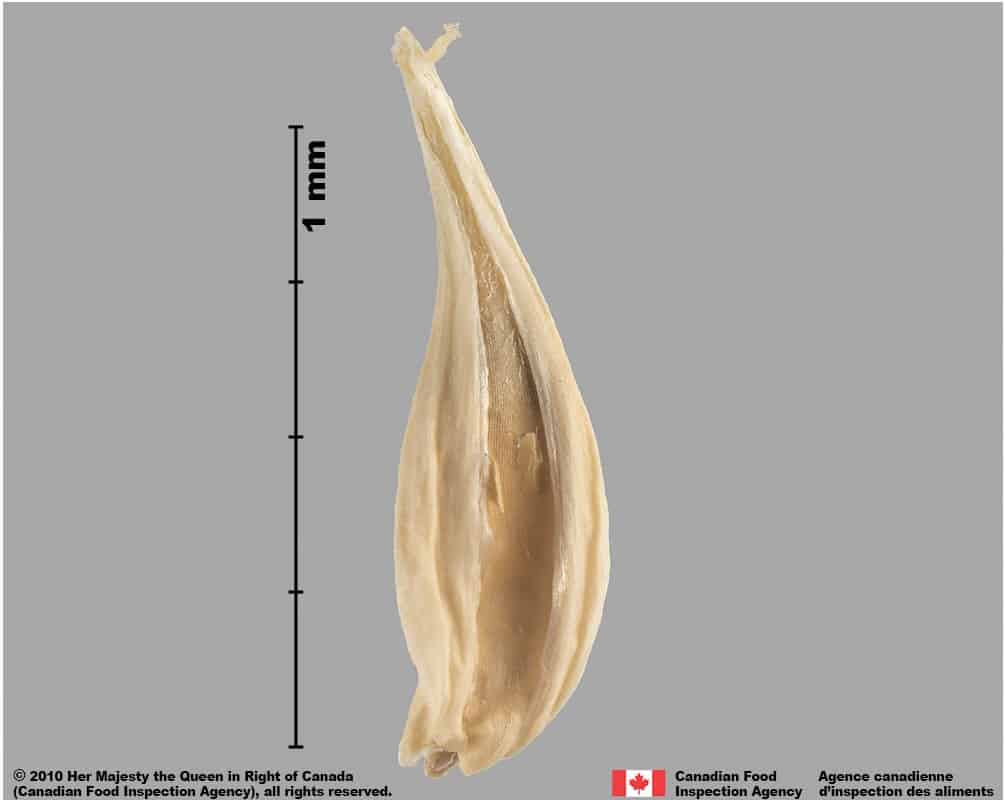
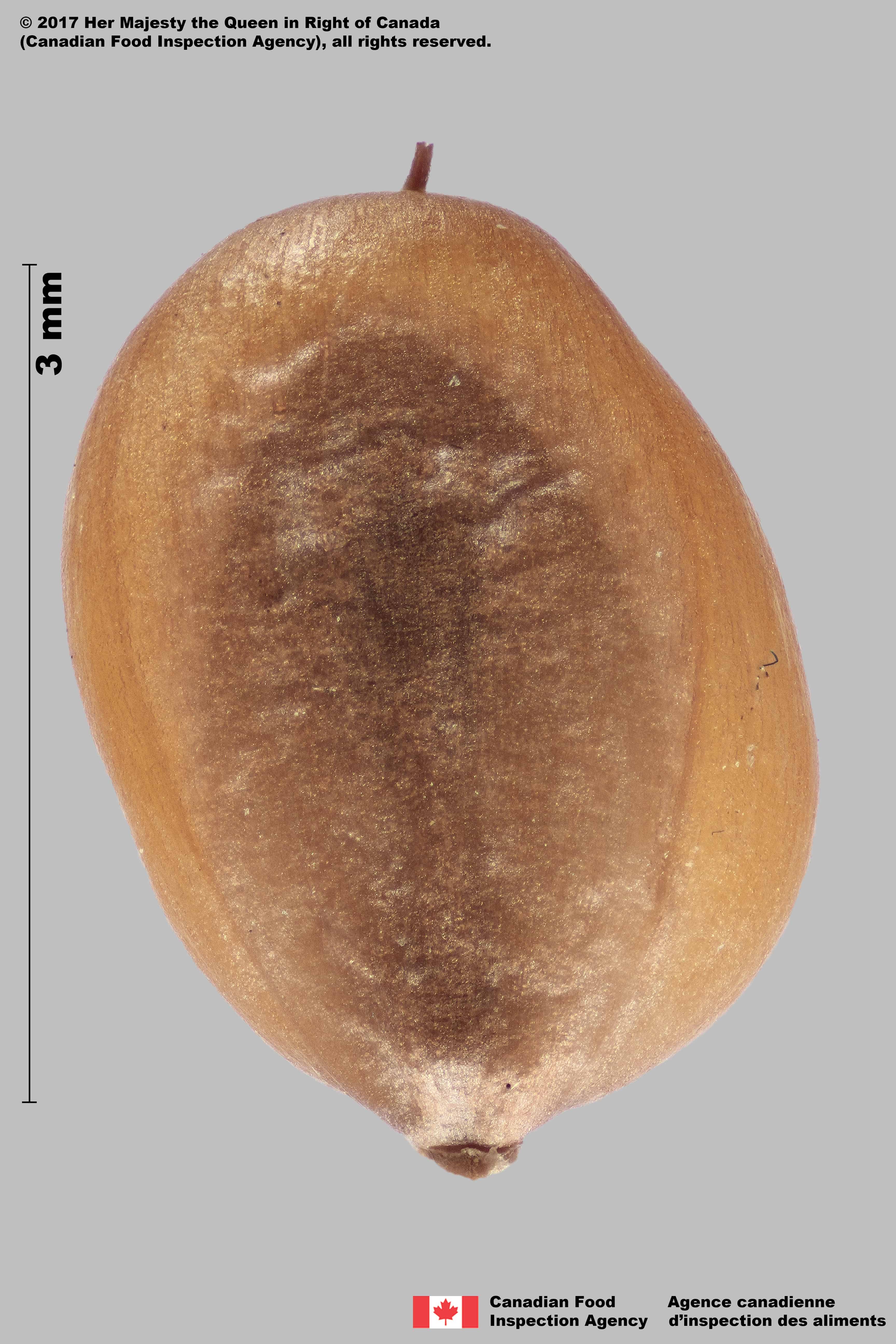
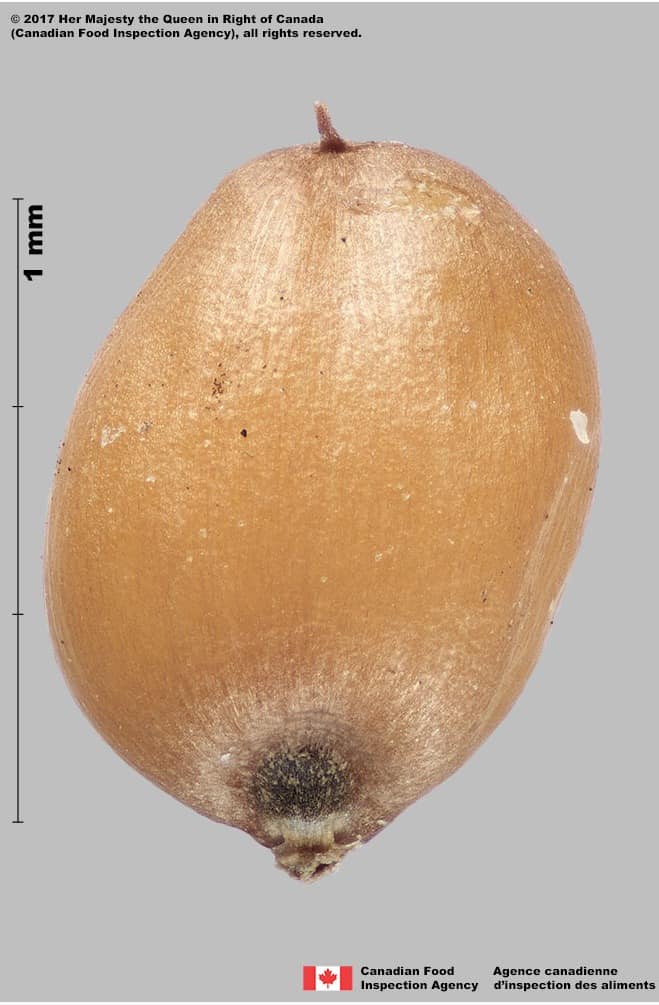
Identification Tips
CONSEILS POUR L’IDENTIFICATION
Additional Botany Information
AUTRES RENSEIGNEMENTS BOTANIQUES
Similar Species
ESPÈCES SEMBLABLES
Similar species are based on a study of seed morphology of various species, and those with similar dispersal units are identified. The study is limited by physical specimen and literature availability at the time of examination, and possibly impacted by the subjectivity of the authors based on their knowledge and experience. Providing similar species information for seed identification is to make users aware of similarities that could possibly result in misidentification.
Within the Poaceae family, Cenchrus species have distinctive features consistent with members of the of the Paniceae tribe:
- Shed as a spikelet
- Spikelets have papery, unequal glumes, a papery sterile floret and a mostly smooth, shell-like floret
- Florets lack a rachilla or pedicels
- Inconspicuous palea teeth
- Florets tend to be short oval rather than elongate
Within the Paniceae tribe, Cenchrus species can be distinguished by:
- A cup-like fascicle, or bur, with both fused and separate stiff spines or flexible bristles and hairy surface
- A teardrop-shaped spikelet and floret
- Spikelet with a smooth and papery surface and a floret with granular surface texture
- Another genera of the Paniceae tribe with burs is Anthephora spp. with burs made up of wide, flat bracts; readily distinguishable from Cenchrus species
Click to select species
Cliquez pour sélectionner les espèces

Cenchrus echinatus

Cenchrus longispinus
Comparison Window
Fenêtre de comparaison
MAIN SPECIES
ESPÈCES PRINCIPALES
Cenchrus

Cenchrus
Poaceae
Southern sandbur (Cenchrus echinatus) burs
MAIN SPECIES
ESPÈCES PRINCIPALES
Cenchrus

Cenchrus
Poaceae
Southern sandbur (Cenchrus echinatus) bur
MAIN SPECIES
ESPÈCES PRINCIPALES
Cenchrus

Cenchrus
Poaceae
Southern sandbur (Cenchrus echinatus) bur
MAIN SPECIES
ESPÈCES PRINCIPALES
Cenchrus

Cenchrus
Poaceae
Cenchrus longispinus
MAIN SPECIES
ESPÈCES PRINCIPALES
Cenchrus

Cenchrus
Poaceae
Long-spined sandbur (Cenchrus longispinus) bur, side view
MAIN SPECIES
ESPÈCES PRINCIPALES
Cenchrus

Cenchrus
Poaceae
Long-spined sandbur (Cenchrus longispinus) bur, side view
MAIN SPECIES
ESPÈCES PRINCIPALES
Cenchrus

Cenchrus
Poaceae
Long-spined sandbur (Cenchrus longispinus) bur, top view
MAIN SPECIES
ESPÈCES PRINCIPALES
Cenchrus

Cenchrus
Poaceae
Long-spined sandbur (Cenchrus longispinus) spikelets
MAIN SPECIES
ESPÈCES PRINCIPALES
Cenchrus

Cenchrus
Poaceae
Cenchrus longispinus (long-spined sandbur) floret; palea view
MAIN SPECIES
ESPÈCES PRINCIPALES
Cenchrus
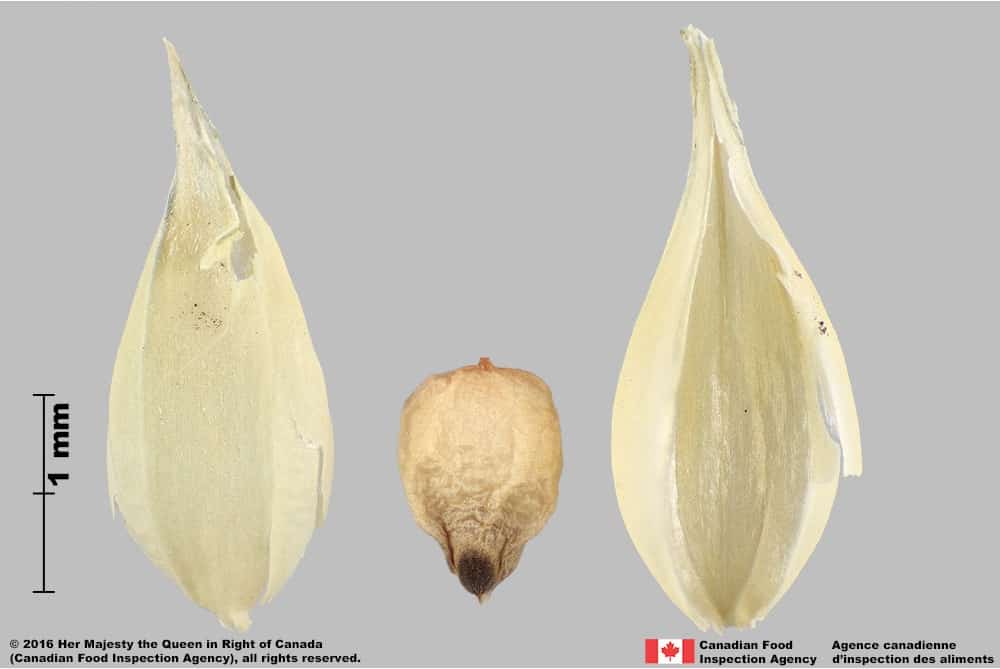
Cenchrus
Poaceae
Long-spined sandbur (Cenchrus longispinus) palea, caryopsis and lemma
SIMILAR SPECIES
ESPÈCES SEMBLABLES
Cenchrus echinatus

Cenchrus echinatus
Poaceae
Southern sandbur (Cenchrus echinatus) burs
SIMILAR SPECIES
ESPÈCES SEMBLABLES
Cenchrus echinatus

Cenchrus echinatus
Poaceae
Southern sandbur (Cenchrus echinatus) bur
SIMILAR SPECIES
ESPÈCES SEMBLABLES
Cenchrus echinatus

Cenchrus echinatus
Poaceae
Southern sandbur (Cenchrus echinatus) bur
SIMILAR SPECIES
ESPÈCES SEMBLABLES
Cenchrus echinatus

Cenchrus echinatus
Poaceae
Cenchrus echinatus
SIMILAR SPECIES
ESPÈCES SEMBLABLES
Cenchrus echinatus

Cenchrus echinatus
Poaceae
Cenchrus echinatus
Need ID Help?
Besoin d’aide pour l’identification?
Reference(s)
Référence(s)
California Department of Food and Agriculture (CDFA) 2017. Encycloweedia. Noxious weed information. https://www.cdfa.ca.gov/plant/IPC/encycloweedia/weedinfo/winfo_photogal-frameset.htm Accessed July 25, 2017.
Chemisquy, M. A., Giussani, L. M., Scataglini, M. A., Kellogg, E. A. and Morrone, O. 2010. Phylogenetic studies favour the unification of Pennisetum, Cenchrus and Odontelytrum (Poaceae): a combined nuclear, plastid and morphological analysis, and nomenclatural combinations in Cenchrus. Annals of Botany 106: 107-130.
Darbyshire, S. J. 2003. Inventory of Canadian Agricultural Weeds. Agriculture and Agri-Food Canada, Research Branch. Ottawa, ON.
Flora of North America (FNA) Editorial Committee, eds. 1993+. Flora of North America North of Mexico [Online]. 22+ vols. New York and Oxford. Accessed December 29, 2022.
Global Biodiversity Information Facility (GBIF) Secretariat. 2022. https://doi.org/10.15468/39omei Accessed via https://www.gbif.org/species/2703746 Accessed December 29, 2022.
Kellogg, E. A. 2015. Flowering plants. Monocots: Poaceae. The families and genera of vascular plants, vol 13. Springer International Publishing. 416 pp.



